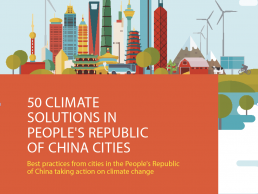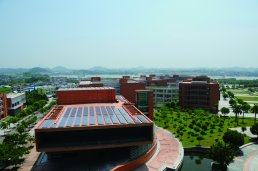First appeared in

Asian Development Bank
50 climate solutions from cities in the People's Republic of China
Doing away with traditional heating and cooling systems, the latest renewable energy technology has been deployed in a 4,025 m2 building in Beijing to achieve an 80% reduction in energy consumption and almost zero emissions.
Many areas in the PRC are hot and humid in summer, but cold and dry in winter, resulting in high energy consumption and CO2 emissions from heating and cooling buildings. The near-zero-emissions project in Beijing is using the latest technology to explore how to greatly reduce emissions, while maintaining indoor comfort levels. The Near-Zero-Energy Consumption Pilot Building by the China Academy of Building Research, a 4,025 m2 building with a renewable energy system, has reduced its total energy consumption considerably.
270
TONS OF CO2 EMISSIONS HAVE BEEN AVOIDED IN JUST ONE BUILDING.
During the cold winters, innovative ground-source heat pumps provide 65% of the heating demand, which can also work to cool the building during summer. PV solar systems power the electrical heat pumps as well as supply much of the power needs throughout the building. The pilot building shows how to achieve more than 50% emissions savings by implementing innovative technology, and is a landmark building for the future development of emissions-reducing technology in PRC buildings.

The building roof with 144 groups of vacuum glass tube middle temperature collectors, provide around a third of the building's annual heating demand (photo by Lie Wu).
The Challenge
Demands on the coal-powered electricity grid are growing, matching calls for more heating and cooling, leading to high greenhouse gas emissions and particulate matter. Constructing buildings that are cooled and heated in a smarter, more efficient way will help to alleviate this problem.
Co-Benefits
Economic Compared with traditional buildings, this project saved 341 MWh in 2015, corresponding to almost CNY240,000 of avoided expense.
Environment The pilot building has achieved 80% energy savings. In addition, the project has also made significant water and material savings, improving environmental standards and comfort.
Health The pilot building regularly monitors PM25, the concentration of volatile organic compounds and CO2, as well as real-time information on temperature and humidity, ensuring high air quality and safeguarding the health of those who occupy the building.

